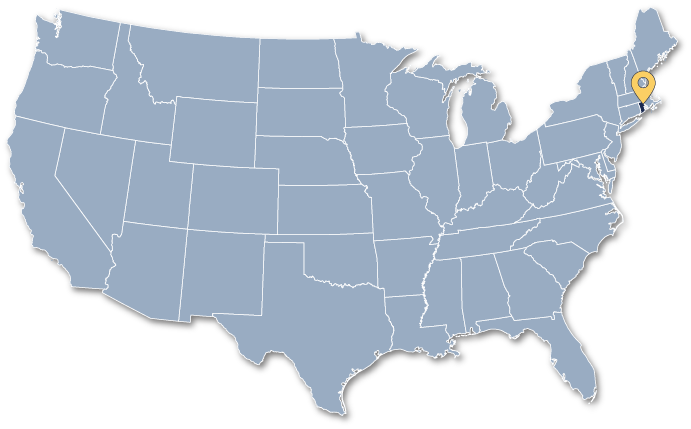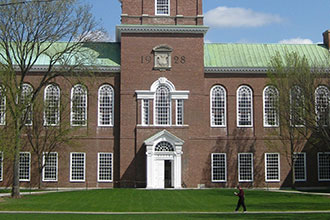Brown University
REQUIREMENTS AND CAMPUS GUIDE
School Name: Brown University
School Location: Providence, MA
School Type: Private Ivy League Liberal Arts
Category: High Reach
Brown University Admissions Rates Class of 2026
Applications: 50,649
Admitted: 5.5%

General Info
SAT/ACT Score
Test Optional for 2021-2022
Admission Cycle
Fall 2021 Test Scores
Math: 740-800
ERW: 720-770
ACT: 33-35
Dates/Deadlines
Early Decision: November 1
Early Results: Mid-December
Regular Deadline: January 5
Regular Results: End of March
School Information
Schedule: Semesters
Curriculum Type: Open Curriculum
Greek Life: Yes
Athletics: DI
BROWN TIPS & GUIDE
Brown Application Requirements, Admissions Tips, and University Guide
How does Brown Compare to other Ivies?
If you’re interested in attending a top academic school in the U.S., you may have your eyes set on the Ivy League: Brown, Yale, University of Pennsylvania, Princeton, Harvard, Dartmouth, Columbia and Cornell. Where does Brown fit in with the Ivies? How does it differentiate itself?
First off, Brown’s Open Curriculum is uniquely designed to empower students to take their own path in school and study a variety of subjects while meeting a diverse population and learning a range of skills. Unlike other Ivies, Brown carries fewer course requirements for students. The only requirements for graduation are that students complete thirty courses, including the requirements for the major they choose. Additionally, students at Brown can take as many classes as they want Pass/Fail, essentially making grades optional.
While the Open Curriculum and Pass/Fail system at Brown have given Brown a reputation of being less academic or competitive than the other Ivies, Brown encourages its students to explore beyond their major and not to stress about how that action will affect their overall GPA.
Brown seeks to foster a less competitive learning environment through it’s Open Curriculum, which may work better for some students’ career interests than others. It’s up to you to decide which criteria are the most important for you.
Here’s everything you should know before you apply to Brown University!
Where is Brown?
Brown is located in Providence, Rhode Island. With a population of about 180,000, Providence is the most populous city in Rhode Island, making it a vibrant city to live in, but not so crowded as to be overwhelming (the same can be said about the campus itself). If you ever want to escape the college bubble, it couldn’t be easier: Brown is about one hour south of Boston, about three hours north of New York City, and 30 minutes from the beach by train or car. Even though Providence is one of the oldest cities in the U.S., with eight colleges and universities, it’s home to plenty of young people. If you need help figuring out whether or not you can make Brown University your home for four years, check out their hosted virtual campus tour.
What is Brown’s Acceptance Rate?
50,649 hopeful students applied to be a part of Brown’s Class of 2026, a 9% increase from last year, and the University’s largest applicant pool to date by more than 4,000 students. Brown University offered admission to 1,651 prospective members of next year’s entering undergraduate class on Thursday, March 31. Admitted through Brown’s regular decision process, the students join early decision applicants offered admission in December 2021 for a total admitted class of 2,546. Their specialty programs typically have even lower acceptance rates. In 2021, of 696 applicants who applied to the Brown-RISD Dual Degree Program, 19 students were admitted (2.72%). 82 out of 3,516 (2.33%) applicants to the Program in Liberal Medical Education (PLME) were admitted, a significant drop from the 3.47% of students that were admitted in the previous admissions cycle due to the 39% increase in applicants.
What is Brown University’s Transfer Acceptance Rate?
In the 2022 application cycle, 2,828 transfer students applied to Brown, 149 of whom were admitted, or 5.3%. This number fluctuates each year—in 2021, 4.3% of transfer applicants were admitted, whereas 3.4% were admitted in 2020.
Here are some other helpful transfer admission statistics to help you determine your likelihood of admission. For 2021:
SAT EBRW (Middle 50% of Admits): 720-770
SAT Math (Middle 50% of Admits): 740-800
ACT Composite (Middle 50% of Admits): 33-35
Of course, as with first year admissions, transfer admissions depend on more than simply test scores and GPA. Brown seeks transfer students with a long-term commitment to extracurricular activities and who will contribute a fresh perspective to Brown’s student body. Over the past four years, Brown has admitted transfer students from 137 colleges and universities worldwide.
What is the student body like at Brown?
Brown University consists of around 6,700 undergraduate students. Of those students, 49.6% are female, 50.3% are male, 37.7% are white, 17.6% are Asian, 13.1% are Hispanic or Latino, 9.5% are Black, 0.3% are American Indian or Alaskan Native, and 0.1% are Pacific Islander (not including those who identify with more than one ethnicity) in 2021. In terms of Early Decision accepted students in 2021: Brown noted on their website that 51% are students of color, defined as those who self-identify as Black, Latinx, Native American, Native Hawaiian or Pacific Islander, or Asian — a 3% increase from last year. Brown is an incredibly diverse place with students from different backgrounds and cultures.
Students participate in community service activities and there are more than 500 student organizations on campus. The majority of students participate in the arts either through a club or by organizing their own projects. Because 74% of students live on campus, and 100% of freshmen live in university housing, Brown is a very tight-knit, connected community. Brown students are known to be intellectually curious, kind, and happy.
How do I apply to Brown?
You can apply to Brown through the Common Application. Through the Common App, you’ll submit a personal statement along with three 250-word Brown-specific supplement essays. If you decide to apply to Brown’s Program in Liberal Medical Education or Brown-Rhode Island School of Design Dual Degree Program, you will additionally write program-specific essays.
During the 2021-2022 admissions cycle, Brown allowed prospective students to submit an optional two-minute video introduction. The video introduction allows students to express their unique voice and give the admissions officers greater insight into who they are as people and demonstrate their interest in Brown. There is no particular topic or format expected of the video introduction, but a list of useful tips can be found on the Brown website.
The video introduction was intended to supplement alumni interviews, which were not conducted in 2021-2022 as they had been in previous years. Opportunities to engage with Brown alumni were instead made available through virtual events, but focused on answering prospective student questions rather than learning about applicants.
What standardized tests do I need to take to get into Brown?
Brown, like many other universities, is test-optional for the 2022-2023 admissions cycle. However, if you are able to sit for either the SAT or ACT, your scores will be considered. In previous years, Brown required applicants to submit the SAT or ACT, with or without the writing portions. If you’d taken the SAT multiple times, Brown accepted score choice, or the ability to super score the scores you send them. For students who took the ACT route, Brown considered the highest scores from each category when reviewing your application. All international applicants whose native language is not English must submit an official Test of English as a Foreign Language (TOEFL) or International English Language Testing System (IELTS) score.
What is a good SAT Score for Brown University?
Here is what a “good” SAT and ACT score for Brown is for freshman enrolled in the fall of 2021:
SAT English Reading and Writing (Middle 50% of Admits): 720-770
SAT Math (Middle 50% of Admits): 740-800
ACT Composite (Middle 50% of Admits): 33-35
Those are all pretty impressive scores, but don’t worry if you don’t score that on your first time around. Brown does not calculate averages across multiple tests; they accept Score Choice and will superscore the SAT. For the ACT, they consider the highest scores submitted for each section.
Brown also looks at course load, leadership, and the Common App. Additionally, the website states that “if you have artistic talents, Brown University encourages you to show off your work. You can use SlideRoom (via the Common Application) or submit Vimeo, YouTube, or SoundCloud links with your application materials. Brown will look at up to 15 images of visual art and up to 15 minutes of recorded work.”
What is Open Curriculum at Brown University?
Like many liberal arts colleges, Brown prioritizes a well-rounded education full of opportunities for community engagement, self-reflection, and intellectual growth. However, Brown distinguishes itself from the majority of other colleges in that it accomplishes these goals without forcing students to take university-mandated courses. Brown’s “open curriculum” has existed for over 50 years, and means no distribution requirements or general education courses will get in the way of you discovering your strengths and passions. The only requirements for graduation are that you complete a minimum of 30 courses over eight semesters, fulfill the requirements for one concentration program (aka major), and demonstrate “excellent skill” in written English by taking designated WRIT courses. Other than that, students at Brown have complete freedom in their learning over their four years.
What special opportunities does Brown offer?
Students interested in both Brown and medical school should consider applying to their eight-year Program in Liberal Medical Education. As the only combined baccalaureate and medical degree program in the Ivy League, the PLME guarantees that you can both take advantage of their unique open curriculum and attend a competitive and well-resourced medical school at the Warren Alpert Medical School of Brown University. PLME is by no means easy to get into—it has an acceptance rate of 2.3% for the class of 2025—but if you want to experience the best of both worlds by enjoying a liberal arts education, and feeling adequately prepared for medical school, it’s certainly worth applying to. To learn more about support for PLME or other combined BS/MD programs, click here.
Brown also has a program for design-oriented students. Their five-year Brown-Rhode Island School of Design Dual Degree Program (BRDD) integrates a liberal arts education with concentrated work in the fine arts. In this program, you’ll complete roughly half of your coursework at Brown and half at RISD, resulting in an A.B. or Sc.B degree from Brown and a BFA degree from RISD. In order to be considered for BRDD, you must apply to both Brown and RISD through the Common App and indicate your interest in the dual degree program. Studying at two esteemed institutions is a great opportunity, but will require lots of hard work and dedication. Take a look at the requirements before you decide that this program is right for you.
Do all students live on campus at Brown?
Housing is guaranteed for all four years that you are at Brown, but, as mentioned earlier, only 74% of students live on campus. All first year students live in residential “units,” with 50-60 other freshmen and 3-4 peer counselors. Additionally, in each first year unit, you’ll find Resident Counselors (RCs), Minority Peer Counselors (MPCs), and Women Peer Counselors (WPCs) to ensure you feel a sense of community in your new home. Students are required to live on campus for their first six semesters. By your final year, you’ll have the option of living on campus or moving off campus. For more information about Residential Life at Brown, please visit their website.
What does Brown’s financial aid package like?
Applying to a private university like Brown may raise a major concern: how much will it cost me and/or my family? The total cost of studying at Brown, including estimated personal costs, is $83,683 per year. Luckily, Brown meets 100% of demonstrated financial need, thanks to the Brown Promise. Building on the work of the Brown Promise initiative, which replaced loans with scholarship funds in all University-packaged undergraduate financial aid awards four years ago, the University will cover the full cost of tuition for families earning $125,000 or less with typical assets starting in the 2022-23 academic year. This change — a result of eliminating consideration of home equity in Brown’s financial aid calculations — is expected to provide thousands of additional dollars in average annual scholarship for aided students and expand the number of families who will receive aid from Brown.
Separately, two years after extending its need-blind policy to military veterans with a goal to double veteran enrollment, Brown established this year a goal to expand need-blind consideration to international students. The University is growing its financial aid budget for international undergraduates, with the goal of becoming fully need-blind for international students who begin at Brown in Fall 2025.
If you intend to apply for financial aid, you’ll need to do so even before you get admitted; November 2nd and February 1st are the deadlines for Early Decision and Regular Decision applicants, respectively. You can use Brown’s net price calculator to estimate how much Brown attending would cost for you.
Should I apply to Brown Early Decision?
Early Decision is a binding application, meaning that if you get accepted to Brown, you must withdraw any applications to other schools. While there is a higher admissions rate for the Early Decision round of applications, Brown writes that there is always a high proportion of exceptionally accomplished students in this applicant pool. You should only apply ED to Brown if it is your top choice, and if you don’t want to apply to any Restricted Early Action programs at schools like Harvard or Stanford.
What can I study at Brown?
This question is difficult to answer, because Brown offers over 80 concentrations and 1,800 undergraduate courses. With so many concentrations, it might be difficult for you to narrow down your options. However, Brown encourages students to be curious and explore their interests. Brown also allows students to double concentrate, as long as they can meet the requirements for both concentrations within eight-semesters. With an open curriculum, you can easily design your course plan so that you get specialized knowledge in subjects aside from your concentration. Brown does not specifically offer pre-law, pre-med or pre-business concentrations; however, many students go on to successful careers in law, medicine or business. Brown also has over 3,000 students enrolled in their numerous graduate programs.
What other resources are offered at Brown? (Here’s our top 5 to look into)
Brown Admission Rates
| | Data Source | Admission Rate |
|---|---|---|
| Class of 2025 | CDS 2021-2022 | 5.45% |
| Class of 2024 | CDS 2020-2021 | 7.67% |
| Class of 2023 | CDS 2019-2020 | 7.07% |
| Class of 2022 | CDS 2018-2019 | 7.67% |
| Class of 2021 | CDS 2017-2018 | 8.55% |
MORE SCHOOLS TO CONSIDER

Dartmouth College
Hanover, NH

John Hopkins University
Baltimore, MD

Claremont McKenna College
School Location: Claremont, CA
School Type: Liberal Arts
View All Schools ↓
| American Univ Amherst Brown Boston Univ CalTech Carnegie Melon Claremont McKenna Columbia Cornell Dartmouth Duke Emory Georgetown Georgia Tech Harvard Hopkins |
MIT NYU Northeastern Northwestern Notre Dame Princeton Rice Stanford Tufts Tulane UChicago UC Berkeley UC Davis UCLA |
UCSB UCSD UIUC UMich UNC UPenn Univ of Southern California UT Austin UVA Vanderbilt Villanova WashU Williams Wisconsin Yale |
*Updated 2022
